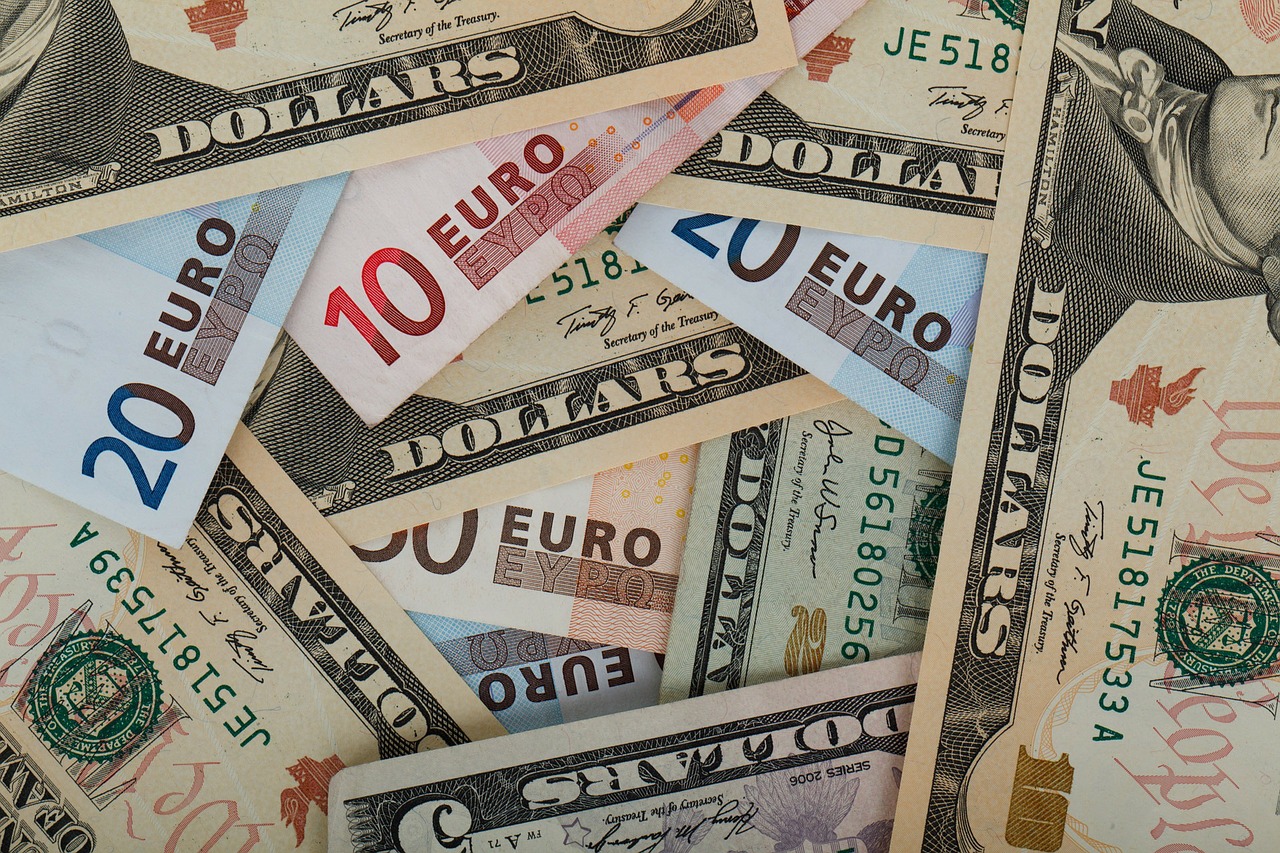The Euro to Dollar currency pair trades below the 1.1600 support area this week. The EUR/USD has support at the 1.1530 levels, the year’s lowest levels so far.

Euro to Dollar Remains Unsteady at the 1.16 Levels
The currency exchange rate of the Euro to Dollar at the 1.15 area has become a major supportive area.
In October 2021, the EUR/USD went to 1.1530 but took support at this region, which is also the lowest point in 2021. Currently, the currency pair is trading just below the 1.1600 levels. There is a negative momentum in the Euro to Dollar currency pair.
The Euro to Dollar currency pair fell below the 200-DMA placed at 1.1890 in July. It made another attempt to move beyond this level in September but slipped again. In October, it went to the lowest levels of 2021, trading at 1.1530, below which it may slide lower.
Euro to USD conversion is at 1.1580 USD. The Euro to Dollar conversion surged to 1.1693 on October 28, 2021, the highest for this month.
The Dollar to Euro converter is at €0.8638. The USD to Euro exchange rate slipped to 0.8651 levels in October but recovered to 0.8667 levels.
The Euro to Dollar today, on November 2, is at 1.1578.
Euro Zone Economic Stability Slower
The trade balance in the eurozone narrowed down to €4.8 billion in August 2021. In the same month last year, it was at €14.0 billion. Rising energy prices have brought an increase in import prices.
The energy crisis increased the cost of fuels and lubricants. Exports were much slower at 18.2%. In particular, trade relations with the United Kingdom have come down after the Brexit deal. Imports and exports are decreasing, showing increasing friction between the two regions.
France Manufacturing PMI has come down to 53.6 in October from 55 in the previous month. Factory expansion has been the slowest since January. Supply chain issues affect the production sector. Services PMI shows improvement from 56.2 to 56.6 in October 2021, month-on-month. Loose travel restrictions are improving tourism that reflects well on the service sector. Restaurants are opening up, and people are going outdoors to salons and cinemas. Recreational activities are improving.
German manufacturing PMI is at 57.8 in October 2021, showing the slowest factory activity in nine months. The material shortage is the restraining factor on the industries. German services PMI are projected to be around 54.50 in 2022. Business confidence saw a drop to 97.7 in October 2021 in Germany, the largest economy in the eurozone. Supply bottlenecks are hurting sentiment among manufacturers and service providers. However, the construction sector shows improvement.
Euro manufacturing PMI is at 58.3 in October 2021. In September, it was at 58.6. New business intake is the weakest since January. Inflation rates are moving higher. But business confidence is strong though the economy is slowing down.
The unemployment rate in Germany in September 2021 is at 3.4%, the lowest since January 2020. However, the employment rate remains below the pre-pandemic level. The unemployment rate in France is at 8.0% for the second quarter, slightly better than 8.1% in the previous period.
Focus on Post-Pandemic Recovery
The eurozone saw good business activity in the first half of the year. Exports have gone up, pushing commodity prices higher. The vaccination drive has brought immunity among the people.
In 2022, the EU may start withdrawing the pandemic stimulus, and commodity prices may also stabilize, say experts. The true strength of the economy will come to light at the beginning of next year. Vaccination rates are picking up, and policymakers can focus on the post-pandemic recovery to bring long-term economic growth.
However, the new variant of the Delta virus is scaring the economy of many countries. Inflation is climbing higher, and geopolitical tensions are coming up too.
The ECB views inflation as transitory though its effects on the economy are high. The ECB may taper down the pandemic stimulus, as recovery is visible in various parts of the euro region after the pandemic. There are some conflicts on the EU Recovery Fund that the ECB has to address.
Energy Crisis Hits Euro to Dollar
The import of natural gas from Russia has come down. Natural gas prices in October are at record high levels. At the COP26 climate conference, the energy transition is taking center stage. Markets expect relief from the energy crisis, especially as the winter season brings increased demand for energy. The supply of gas does not meet the increasing demand, which causes an escalation in prices. It adds pressure on the EUR/USD exchange rate.
Apart from Russia, Algeria supplies gas to the eurozone. Local tensions in Algeria are hampering the supply of gas to Spain and other eurozone regions.
US Inflation Data Hits Negatively on the Euro
US inflation data has come in strongly, affecting the Euro. Decisions from the 2-day Federal Reserve meeting today will further affect global sentiment. Investors expect QE tapering announcement at the FOMC meeting. The EUR/USD may slide further, say experts.